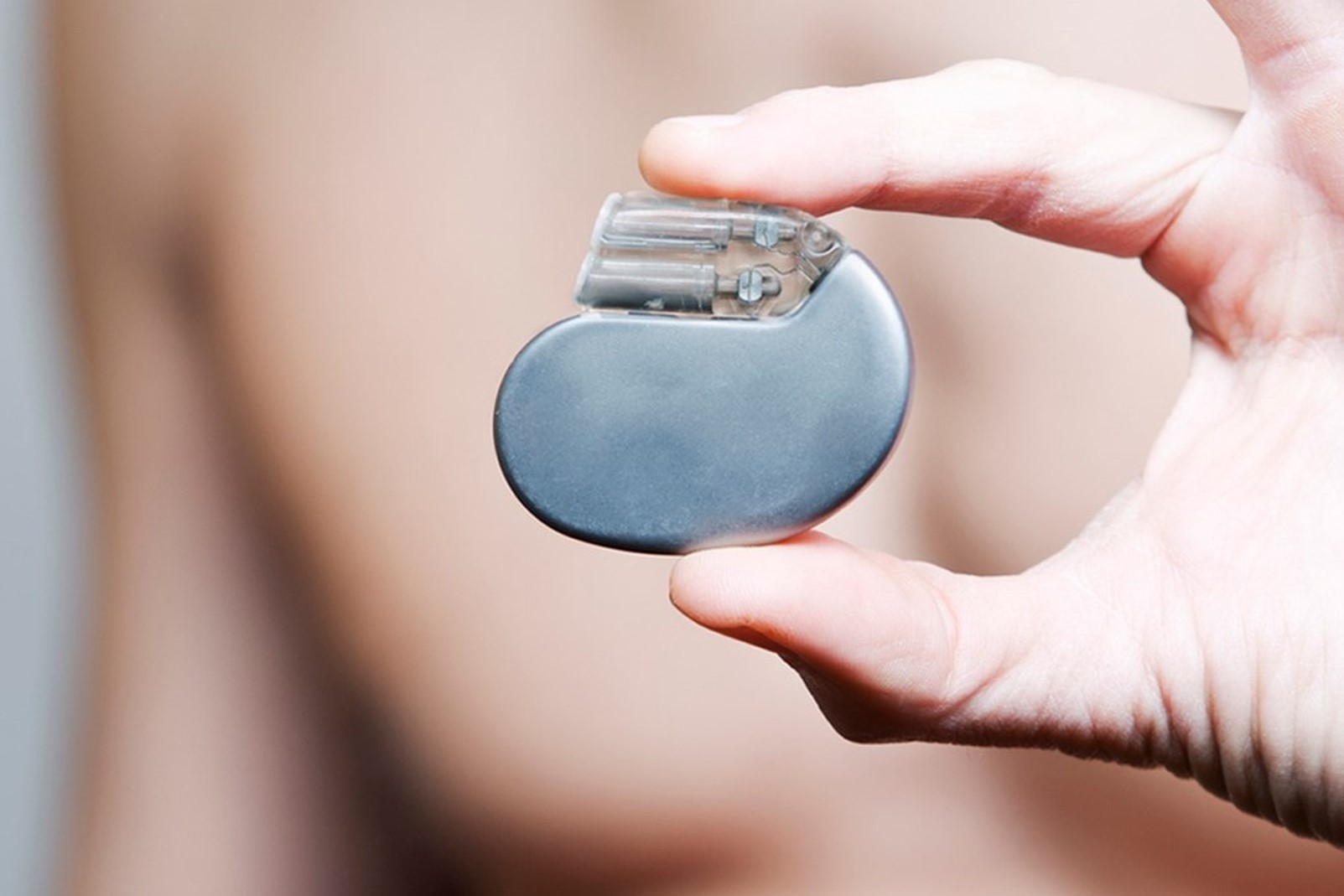
What is a cardiac pacemaker?
The cardiac pacemaker is a tiny small device which, surgically implanted, is capable of correcting heart rhythm disturbances; intervenes when it perceives that the heart is beating too fast, too slow or there is a discontinuous beat
The pacemaker installation procedure lasts from 40 to 120 minutes with a conscious patient.
But is it possible there is interference between the pacemaker and the mobile phone?
It can happen even if rare, especially if both devices are not technologically advanced.
This interaction does not always have consequences that affect cardiac activity.
But what is the pacemaker?
It was invented in 1957 in the United States.
Emits and delivers electrical impulses to regulate heart rate.
It has a generator and about two leads that electrically stimulate the heart.
Devices nowadays are automatic, they are able to analyze the patient’s condition by reducing artificial stimuli.
Patients with pacemakers or subcutaneous defibrillators come into daily contact with electronic devices that use magnetic fields; the most intense interference can occur with mobile phones when a phone call arrives or when connecting to the internet, the pacemaker or defibrillator can interpret the electromagnetic interference as a heart signal.
Interference decreases as you move away from the device.
Studies up to 1997 see an incidence of interference with mobile phones ranging from 15-30%, the latest studies have seen a reduction of interference up to 1-5%.
The ‘older’ the pacemakers are, the more likely there is interference.
Modern pacemakers have filters that act as a shield against interference.
How long does a pacemaker last?
The duration of a pacemaker is variable, depending on the frequency of use and the electrical stimulation.
The higher the level of risk of the heart with its cardiac activity, the greater the need for the pacemaker to activate and consequently the shorter its duration.
Generally, it can last from a minimum of 5 to a maximum of 10 years.
In the event of a discharge, only the generator will be replaced without the need for intervention; it is a rapid intervention that lasts about half an hour and does not require complete entrapment for 24 hours as happens for the implantation of the pacemaker.
The replacement of the pacemaker is carried out in regime by incision of the skin in correspondence of the old device.
We proceed with the extraction of the pacemaker and the implantation of the new device which will be placed in the subcutaneous pocket.
Leads are replaced only in the event of a malfunction.
The sensitivity of Pacemakers to electromagnetic fields is closely connected to the architecture of the internal circuits
These can act as a sort of antenna for the signals and electromagnetic waves emitted by mobile phones which can interfere with the functioning of pacemakers which interpret these ‘signals’ as electrical activity of the heart.
These interferences can represent a risk if the pacemaker patient is totally dependent on it.
Safety distance
To avoid the risk of interference, it is advisable to keep mobile devices approximately 15 cm away from the pacemaker implant site.
For example, do not keep your cell phone in your breast pocket if your pacemaker is implanted in your chest or on your belt if it is implanted in your abdomen; it would also be advisable to use the earphone or speakerphone during calls, you could still use the ear opposite the side where the pacemaker is implanted to converse.
Read Also
Emergency Live Even More…Live: Download The New Free App Of Your Newspaper For IOS And Android
Heart Pacemaker: How Does It Work?
Paediatric Pacemaker: Functions And Peculiarities
What Is The Difference Between Pacemaker And Subcutaneous Defibrillator?
Heart: What Is Brugada Syndrome And What Are The Symptoms
Genetic Heart Disease: Brugada Syndrome
Cardiac Arrest Defeated By A Software? Brugada Syndrome Is Near To An End
Heart: Brugada Syndrome And The Risk Of Arrhythmia
Heart Disease: First Study On Brugada Syndrome In Children Under 12 From Italy
Mitral Insufficiency: What It Is And How To Treat It
Semeiotics Of The Heart: History In The Complete Cardiac Physical Examination
Electrical Cardioversion: What It Is, When It Saves A Life
Heart Murmur: What Is It And What Are The Symptoms?
Performing The Cardiovascular Objective Examination: The Guide
Branch Block: The Causes And Consequences To Take Into Account
Cardiopulmonary Resuscitation Manoeuvres: Management Of The LUCAS Chest Compressor
Supraventricular Tachycardia: Definition, Diagnosis, Treatment, And Prognosis
Identifying Tachycardias: What It Is, What It Causes And How To Intervene On A Tachycardia
Myocardial Infarction: Causes, Symptoms, Diagnosis And Treatment
Aortic Insufficiency: Causes, Symptoms, Diagnosis And Treatment Of Aortic Regurgitation
Congenital Heart Disease: What Is Aortic Bicuspidia?
Atrial Fibrillation: Definition, Causes, Symptoms, Diagnosis And Treatment
Ventricular Fibrillation Is One Of The Most Serious Cardiac Arrhythmias: Let’s Find Out About It
Atrial Flutter: Definition, Causes, Symptoms, Diagnosis And Treatment
What Is Echocolordoppler Of The Supra-Aortic Trunks (Carotids)?
What Is The Loop Recorder? Discovering Home Telemetry
Cardiac Holter, The Characteristics Of The 24-Hour Electrocardiogram
Peripheral Arteriopathy: Symptoms And Diagnosis
Endocavitary Electrophysiological Study: What Does This Examination Consist Of?
Cardiac Catheterisation, What Is This Examination?
Echo Doppler: What It Is And What It Is For
Transesophageal Echocardiogram: What Does It Consist Of?
Paediatric Echocardiogram: Definition And Use
Heart Diseases And Alarm Bells: Angina Pectoris
Fakes That Are Close To Our Hearts: Heart Disease And False Myths
Sleep Apnoea And Cardiovascular Disease: Correlation Between Sleep And Heart
Myocardiopathy: What Is It And How To Treat It?
Venous Thrombosis: From Symptoms To New Drugs
Cyanogenic Congenital Heart Disease: Transposition Of The Great Arteries
Heart Rate: What Is Bradycardia?
Consequences Of Chest Trauma: Focus On Cardiac Contusion


